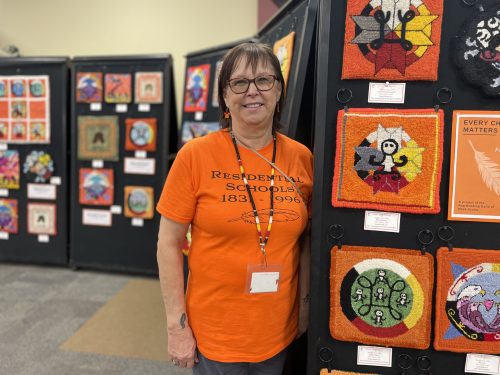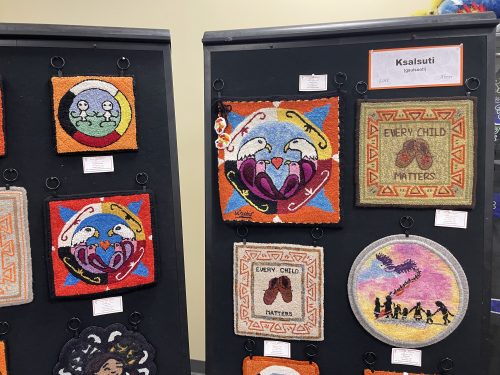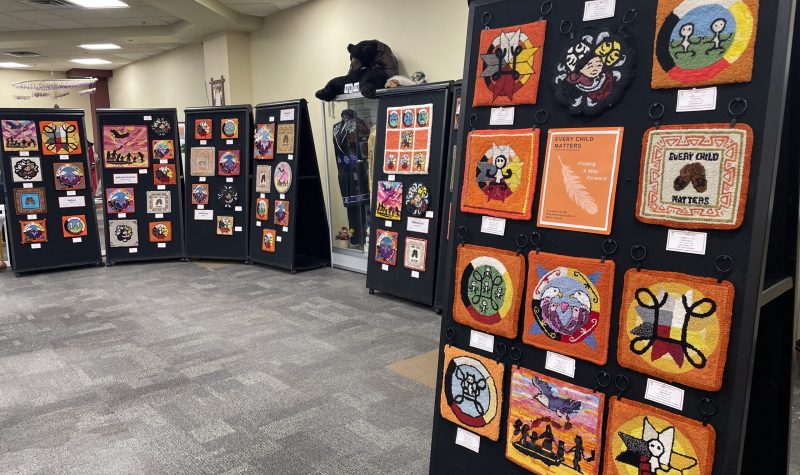A new exhibit at the Mi'kmaw Native Friendship Centre in Halifax is using rug hooking and fibre arts as an artistic expression to create awareness about residential schools, showcase Mi'kmaq artists and as an opportunity for the community to learn more about "Every Child Matters."
Partnered with non-profit organization Rug Hooking Guild of Nova Scotia, the exhibit, "Every Child Matters" includes 66 different sized colourful rugs and tapestries, created by 49 different rug hookers from the guild. The tapestries were inspired by the works of five Mi'kmaw artists across Nova Scotia: Tara Francis, Gerald Gloade, Phyllis Grant, Lorne Julian, and Noella Moore.

Theresa Meuse is the cultural advisor at the Mi'kmaw Native Friendship Centre. Photo by Sara Gouda.
Theresa Meuse, cultural advisor at the centre, said the idea for this exhibit first came about last year.
"They are commonly referred to as rug hookers, it is quite a neat technique that they do. It's almost like it's a canvas. They have to sketch, design, use wool and different mediums to actually create that. When you see them, each has done a different technique to create the pieces," said Empringham.
Empringham said the tapestries were divided into different sections in reference to the seven sacred teachings; love, respect, courage, honesty, wisdom, humility and truth.

The artwork was presented under the seven sacred teachings Mi'kmaq. Photo by Sara Gouda.
The art installation will be available until the end of the month, and will then be moved to Truro and will travel throughout the Maritimes.
"We don't want the education of residential schools to stop, and the spirits of those children, they're still finding more grave sites so we've got to keep that momentum going. It really is a big piece of our history," said Meuse.
Listen to the full CKDU interview below:


